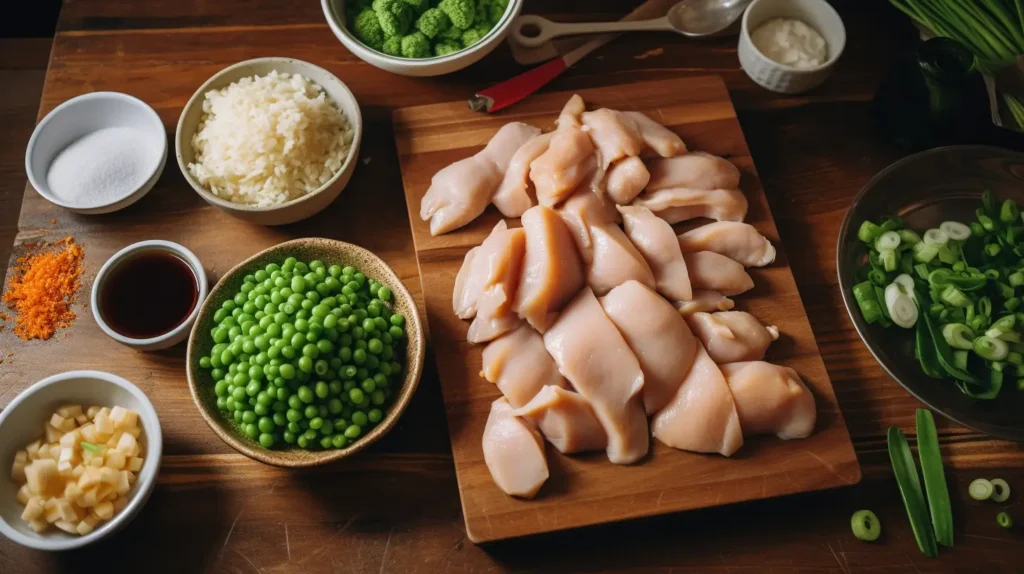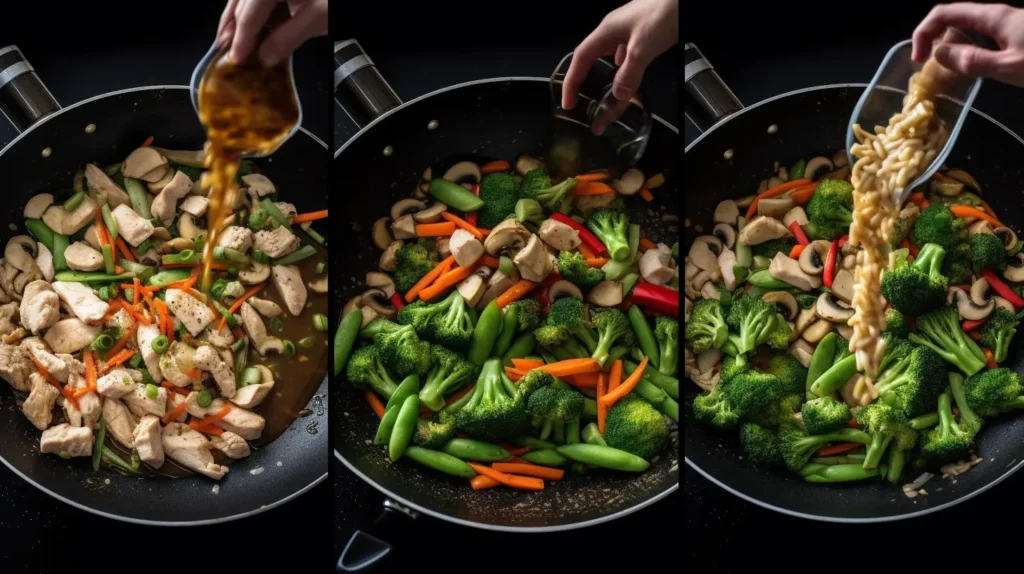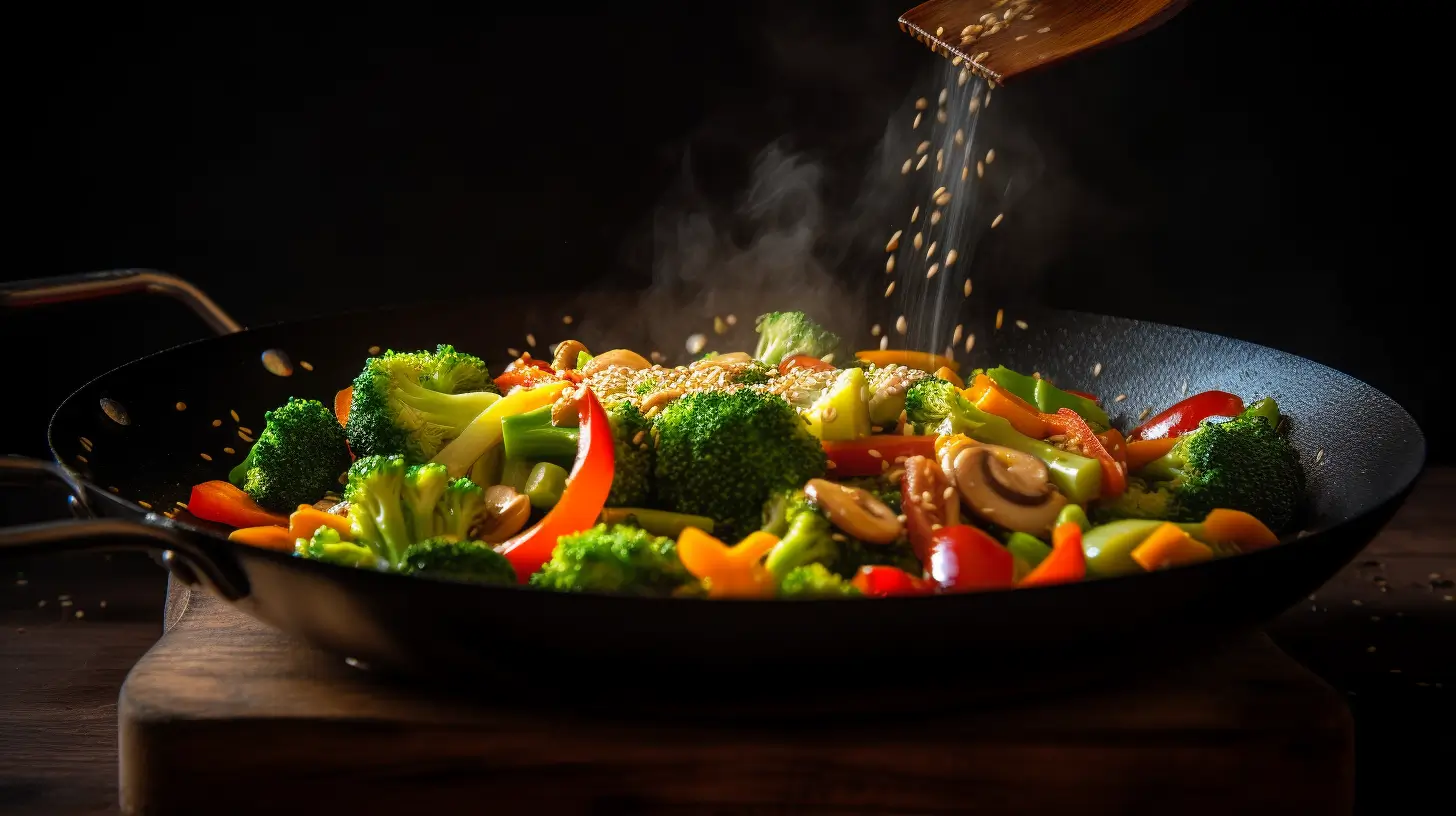Table of Contents
INTRODUCTION
Let’s face it—after a long day, whipping up dinner isn’t always the easiest task. However, you want something quick, healthy, and, most importantly, delicious. That’s exactly where frozen stir fry vegetables come to the rescue. In fact, they’re the secret weapon for busy nights, a hack every home cook should have in their arsenal. Not only are they affordable, but they’re also versatile and a cinch to cook. As a result, they’re a go-to for meals that satisfy without stress.
Whether you’re a stir fry veteran or trying it for the first time, this guide will take you through everything you need to know about cooking with frozen stir fry vegetables. From pro tips to prevent soggy veggies to recipe ideas that’ll wow your family, you’ll be ready to make dinner in no time.
Cooking with frozen stir fry vegetables is one of the easiest ways to whip up a quick, healthy dinner. Whether you’re short on time or looking for a nutritious meal option, frozen veggies are a fantastic ingredient to have on hand. For another effortless and healthy dinner option, check out our guide on Grilled Salmon in Foil: Quick & Juicy Recipe.
Why Frozen Stir Fry Vegetables Are a Dinner Game-Changer
Imagine opening your freezer to find a colorful mix of veggies that are prepped and ready to go. Moreover, there’s no chopping, no peeling—just a bag of goodness waiting to be transformed. Therefore, here’s why frozen stir fry vegetables are a dinner lifesaver:
- Convenience: They’re pre-cut, so you can skip the prep and get straight to cooking.
- Long Shelf Life: Unlike fresh vegetables, frozen ones don’t spoil quickly.
- Nutritional Value: Thanks to quick freezing methods, they retain their vitamins and minerals.
Frozen stir fry vegetables are pre-washed, pre-cut, and ready to toss into your wok or skillet, making them a lifesaver for busy weeknights. If you’re a fan of versatile ingredients, you might also love our Recipe for Chicken Stir Fry with Frozen Vegetables for a protein-packed twist on this classic dish.
If you’ve ever wondered if frozen veggies are as healthy as fresh ones, the answer is yes! According to Healthline, they pack just as much nutrition, making them a smart addition to your meal plan.
Ingredients for a Perfect Stir Fry
To create a tasty stir fry, you’ll need just a few simple ingredients. Here’s what you’ll need:

| Ingredient | Quantity | Notes |
|---|---|---|
| Frozen Stir Fry Vegetables | 1 lb | Choose your favorite mix |
| Protein (e.g., tofu, chicken, shrimp) | 8 oz | Optional, adjust to preference |
| Soy Sauce | 2 tbsp | Low-sodium preferred |
| Sesame Oil | 1 tbsp | Adds a nutty flavor |
| Garlic | 2 cloves, minced | Fresh or pre-minced |
| Ginger | 1 tsp, grated | Optional, for extra zest |
Pro tip: Having your ingredients ready before you start cooking (a process known as mise en place) makes stir frying a breeze!
Step-by-Step Guide to Stir-Frying Frozen Vegetables
If you’re ready to turn those frozen veggies into a meal, here’s a simple step-by-step process:
1. Prep Your Ingredients
Start by thawing your frozen vegetables slightly if you have the time. While it’s not strictly necessary, a quick thaw can help them cook more evenly.
If you’re adding protein, such as chicken or shrimp, cut it into bite-sized pieces and season lightly with salt and pepper. Prepare your aromatics, like garlic and ginger, as they’ll add an extra punch of flavor.
2. Heat the Pan
Grab your wok or a large skillet and set it over high heat. Add the sesame oil and wait until it starts to shimmer. High heat is essential for stir frying, as it helps achieve that tender-crisp texture without steaming the vegetables.
3. Stir-Fry in Stages
- Begin with your protein. Cook it first, making sure it’s golden and cooked through. Remove it from the pan and set it aside.
- Next, add your vegetables to the hot pan. Stir frequently, allowing the veggies to cook evenly. This should take about 3-5 minutes.
4. Add Flavor
Return the protein to the pan, then pour in your soy sauce, garlic, and ginger. Stir everything together for another 2 minutes, letting the flavors meld.

Pro Tips for Stir-Frying Frozen Vegetables
- Don’t Overcrowd the Pan: Cooking in batches prevents steaming and helps veggies stay crisp.
- Use High Heat: This allows for quick cooking and retains the vegetables’ vibrant color.
- Season at the Right Time: Add sauces and spices toward the end to avoid soggy vegetables.
Delicious Recipe Variations
Once you’ve mastered the basics, you can easily switch things up with these variations:
Thai-Style Stir Fry
- Add a tablespoon of red curry paste and a splash of coconut milk for a creamy, spicy dish.
- Toss in some Thai basil for an authentic flavor.
Teriyaki Stir Fry
- Replace soy sauce with teriyaki sauce and add a drizzle of honey.
- Top with sesame seeds and scallions for extra flair.
Low-Carb Option
- Skip the traditional rice or noodles and serve your stir fry over cauliflower rice or zucchini noodles.
Common Mistakes to Avoid
- Cooking Straight from Frozen: While convenient, cooking frozen veggies directly can make them watery. If possible, thaw them slightly before cooking.
- Not Using Enough Heat: Medium or low heat won’t give you the results you’re looking for. Go high!
- Overcooking: Stir fry is all about that crisp texture, so keep an eye on your cooking time.
What to Serve with Your Stir Fry
Pairing your stir fry with the right side can complement the flavors. Here are some options:
- Steamed Rice: A classic that soaks up all the sauce.
- Noodles: Think lo mein, soba, or even spaghetti.
- Salads: A light green salad balances the richness of the stir fry.
FAQ Section
Q1: Do I need to thaw frozen stir fry vegetables before cooking?
Not necessarily. Cooking them frozen helps retain crispness, but thawing slightly can improve texture.
Q2: What proteins work best with frozen stir fry vegetables?
Chicken, shrimp, tofu, or even leftover cooked meat are excellent choices.
Q3: Can I use frozen stir fry vegetables in soups or stews?
Yes, they’re a great addition to soups, stews, or casseroles for extra nutrients and flavor.
Q4: What’s the best way to store leftover stir fry?
Store in an airtight container in the fridge for up to 3 days.
Benefits of Frozen Stir Fry Vegetables
Using frozen vegetables in stir fry dishes isn’t just about convenience; it’s also about reducing food waste. Leftover veggies can easily be added to soups, stews, or casseroles. Check out more tips in our Blog Section, where we dive into creative ways to use pantry and freezer staples.
Aside from their convenience, frozen vegetables are an eco-friendly option that reduces food waste. Learn more about how reducing food waste helps the environment and its positive impact.
Conclusion
Frozen stir fry vegetables are the ultimate dinner hack. They’re versatile, nutritious, and incredibly easy to cook. Whether you’re whipping up a quick weeknight meal or experimenting with new flavors, this ingredient is a game-changer for your kitchen.
So, the next time you’re staring into your freezer wondering what to make, grab that bag of stir fry veggies and give these recipes a try. You’ll quickly have a tasty and nutritious dinner ready to serve.
What’s your favorite way to cook with frozen vegetables? Share your tips in the comments below!


Thank you for your sharing. I am worried that I lack creative ideas. It is your article that makes me full of hope. Thank you. But, I have a question, can you help me? https://www.binance.com/es-MX/register?ref=JHQQKNKN